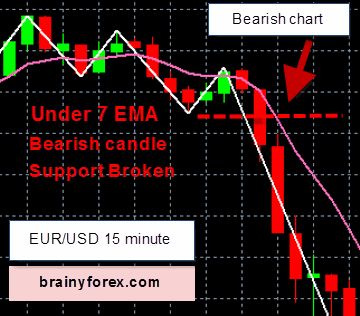
Many commentators hark back to the lessons of Bretton Woods as an example to possibly restore greater order and stability to the present international monetary system. In a recent paper, I revisit these issues from over a half century ago (Bordo 2017). Negotiators at the Bretton Woods conference, fresh from what they perceived as a disastrous experience with floating rates in the 1930s, concluded that major monetary fluctuations could stall the free flow of trade.

IMF approval was necessary for any change in exchange rates in excess of 10%. It advised countries on policies affecting the monetary system and lent reserve currencies to nations that had incurred balance of payment debts. The Bretton Woods agreement of 1944 established a new international monetary system. It replaced the gold standard with the U.S. dollar as the global currency. By so doing, it established America as the dominant power in the world economy.
The Bretton Woods Agreement and System Explained
Yet U.S. officials were determined to open their access to the British empire. The combined value of British and U.S. trade was well over half of all the world’s trade in goods. For the U.S. to open global markets, it first had to split the British empire. While Britain had economically dominated the 19th century, U.S. officials intended the second half of the 20th to be under U.S. hegemony.

Indentured labourers were engaged in India under contracts that guaranteed them a return trip to India after five years of service on their employer’s plantation. (ii) The majority of indentured labourers migrated in the hope of a better future, but they were taken advantage of by both the recruitment agent and the employer. (D) 2008, Sept. 2010, 2012] Or Enumerate the importance of Silk Routes. (i) The Silk Roads are an excellent illustration of flourishing pre-modern commercial and cultural connections between different parts of the globe. (ii) Chinese businessmen exploited the silk route to export silk to other countries. (iii) Traders exploited these channels to transport commodities from one country to another.
The breakdown of the business structure of Europe during the war was complete. President Franklin D. Roosevelt’s August 1941 meeting with British Prime Minister Winston Churchill on a ship in the North Atlantic, was the most notable precursor to the Bretton Woods Conference. Like Woodrow Wilson before him, whose “Fourteen Points” had outlined U.S. aims in the aftermath of the First World War, Roosevelt set forth a range of ambitious goals for the postwar world even before the U.S. had entered the Second World War. The absence of a high degree of economic collaboration among the leading nations will … inevitably result in economic warfare that will be but the prelude and instigator of military warfare on an even vaster scale. The IMF was not designed to print money and influence economies with monetary policies. Q.17. Explain the impact of the Great Depression on the Indian economy.
. What is meant by the Bretton Woods Agreement
Purchasing currency would lower the supply of the currency and raise its price. If a currency’s price became too high, the central bank would print more. This printing production would increase the supply and lower the currency’s price. Imagine all of the paperwork, draft reports, notes, correspondence, and other records generated during the conference.
Ledama: We must relook Bretton woods agreement – The Star Kenya
Ledama: We must relook Bretton woods agreement.
Posted: Sat, 04 Mar 2023 08:00:00 GMT [source]
Despite the economic cost implied by such a policy, being at the center of the international market gave the U.S. unprecedented freedom of action in pursuing its foreign affairs goals. A trade surplus made it easier to keep armies abroad and to invest outside the U.S., and because other nations could not sustain foreign deployments, the U.S. had the power to decide why, when and how to intervene in global crises. The dollar continued to function as a compass to guide the health of the world economy, and exporting to the U.S. became the primary economic goal of developing or redeveloping economies.
When was the Bretton Woods Agreement?
We believe in empowering every single student who couldn’t dream of a good career in engineering and medical field earlier. Upgrading to a paid membership gives you access to our extensive collection of plug-and-play Templates designed to power your performance—as well as CFI’s full course catalog and accredited Certification Programs. Access and download collection of free Templates to help power your productivity and performance.
It was envisioned that these changes in exchange rates would be quite rare. However, the concept of fundamental disequilibrium, though key to the operation of the par value system, was never defined in detail. Members were required to pay back debts within a period of 18 months to five what is meant by bretton woods agreement class 10 years. In turn, the IMF embarked on setting up rules and procedures to keep a country from going too deeply into debt year after year. The Fund would exercise “surveillance” over other economies for the U.S. Quota subscriptions form the largest source of money at the IMF’s disposal.
This facilitated the decisions reached by the Bretton Woods Conference. Furthermore, all the participating governments at Bretton Woods agreed that the monetary chaos of the interwar period had yielded several valuable lessons. (i) As prices fell and the danger of a slump loomed, US banks cut domestic lending and called back loans. (iii) Due to a drop in income, many American households were unable to service their debts and were forced to sell their homes, vehicles, and other consumer goods. (v) The number of unemployed people began to rise, reaching 17 million in 1933.
Correspondence: Fixing the Current System or Moving Toward a … – Texas National Security Review
Correspondence: Fixing the Current System or Moving Toward a ….
Posted: Mon, 10 Oct 2022 07:00:00 GMT [source]
The greater the gap between free market gold prices and central bank gold prices, the greater the temptation to deal with internal economic issues by buying gold at the Bretton Woods price and selling it on the open market. The rules of Bretton Woods, set forth in the articles of agreement of the International Monetary Fund (IMF) and the International Bank for Reconstruction and Development (IBRD), provided for a system of fixed exchange rates. The rules further sought to encourage an open system by committing members to the convertibility of their respective currencies into other currencies and to free trade.
What is the Bretton Woods System?
At the time, countries had to settle their debts in dollars with $35 being equal to an ounce of gold. These new forms of monetary interdependence made large capital flows possible. During the Bretton Woods era, countries were reluctant to alter exchange rates formally even in cases of structural disequilibria. Because such changes had a direct impact on certain domestic economic groups, they came to be seen as political risks for leaders. As a result, official exchange rates often became unrealistic in market terms, providing a virtually risk-free temptation for speculators. They could move from a weak to a strong currency hoping to reap profits when a revaluation occurred.
- Foodgrains from the United States, Australia, and other eastern European countries began to be sent to the United Kingdom, putting British producers further behind.
- Through this letter, I want to tell you about my work life and hardships.
- This approach was consistent with his belief that public institutions should be able to intervene in times of crises.
- (iii) This improved their efficiency in particular work as well as their production pace.
- The Bretton Woods Agreement was reached in a 1944 summit held in New Hampshire, USA on a site by the same name.
The remedies that followed often worked in the short run but not in the long run. The main threat to the system as a whole was the Triffin problem, which was exacerbated after 1965 by expansionary US monetary and fiscal policy which led to rising inflation. The economic hardship of the war period forced the people of British colonies against them. While Britain was preoccupied with war, industries had development in Japan and India. So now Britain had to face competition from these countries, especially from Japan.
This bank would issue a new international currency, the “bancor,” which would be used to settle international imbalances. Each country would receive a limited line of credit that would prevent it from running a balance of payments deficit, but each country would also be discouraged from running surpluses by having to remit excess bancor to the Clearing Union. The plan reflected Keynes’s concerns about the global postwar economy. He assumed the United States would experience another depression, causing other countries to run a balance-of-payments deficit and forcing them to choose between domestic stability and exchange rate stability. Instead, they set up a system of fixed exchange rates managed by a series of newly created international institutions using the U.S. dollar as a reserve currency. By February 1942, officials in both countries had already begun laying more concrete plans for international economic stability in the postwar world.
They sought to create a system that would not only avoid the rigidity of previous international monetary systems, but would also address the lack of cooperation among the countries on those systems. The classic gold standard had been abandoned after World War I. In the interwar period, governments not only undertook competitive devaluations but also set up restrictive trade policies that worsened the Great Depression. The United Nations Monetary and Financial Conference was held in July 1944 at the Mount Washington Hotel in Bretton Woods, New Hampshire, where delegates from forty-four nations created a new international monetary system known as the Bretton Woods system. These countries saw the opportunity for a new international system after World War II that would draw on the lessons of the previous gold standards and the experience of the Great Depression and provide for postwar reconstruction. It was an unprecedented cooperative effort for nations that had been setting up barriers between their economies for more than a decade.
- Economists and other planners recognized in 1944 that the new system could only commence after a return to normality following the disruption of World War II.
- Essentially, the agreement called for the newly created IMF to determine the fixed rate of exchange for currencies around the world.
- Formally introduced in December 1945 both institutions have withstood the test of time, globally serving as important pillars for international capital financing and trade activities.
- [CBSE 2008 (D)] Or Describe in brief the world economic conditions of the post First World War period.
- Gold’s price spiked in response to events such as the Cuban Missile Crisis, and other less significant events, to as high as $40/ounce.
- The IMF was charged with the maintenance of a system of fixed exchange rates centered on the U.S. dollar and gold.
(iv) Trade and cultural exchange have always been inextricably linked. Early Christian missionaries, as well as early Muslim preachers a few decades later, very probably travelled through this path to Asia. Buddhism developed in eastern India and spread throughout the world via crossroads on the silk routes.
(iv) No worker could stop or slow down the conveyer belt if they stood in front of it. (v) At first, many workers left because they couldn’t handle the stress of the job. (vi) Henry Ford quadrupled their salary, and in response, he increased the conveyor belt’s speed and outlawed trade unions.

This flexibility meant a member state would not have to induce a depression to cut its national income down to such a low level that its imports would finally fall within its means. Thus, countries were to be spared the need to resort to the classical medicine of deflating themselves into drastic unemployment when faced with chronic balance of payments deficits. Before the Second World War, European nations—particularly Britain—often resorted to this.



